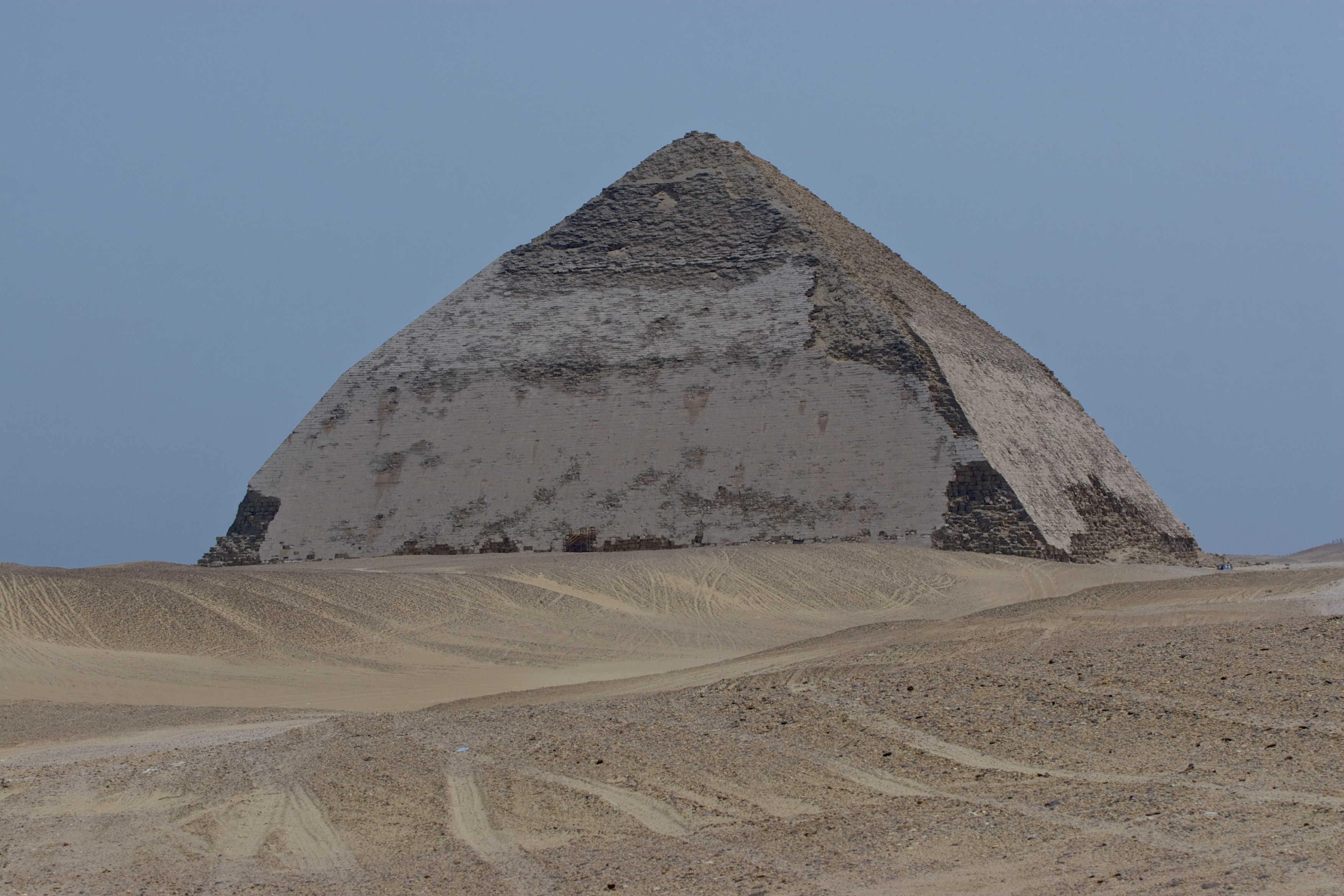Od Memfis do Teb

Piramida Łamana Seneferu w Dahszur
Około 3 km na południe od Sakkary znajduje się nekropola w Dahszur, na terenie której swoją działalność budowlaną prowadził m.in. Seneferu, władca zaliczony do IV dynastii, będący jednym z najaktywniejszych budowniczych starożytnego Egiptu. Starożytne teksty mówią o tym, iż Seneferu każdego roku fundował nową świątynię, twierdzę lub inną budowlę. Do jego najważniejszych aktywności budowlanych bez wątpienia zaliczyć należy piramidy, których przypisuje mu się aż cztery! Jedną z nich jest Piramida Łamana na nekropoli w Dahszur, która nie była jednak miejscem ostatecznego spoczynku ciała króla. Cechą charakterystyczną tej konstrukcji, której zawdzięcza ona swoją nazwę, jest zmiana kąta nachylenia ścian bocznych, co najprawdopodobniej było efektem osiadania gruntu i konieczności zmiany kąta, co wiązało się z wykorzystaniem mniejszej ilości materiału budowlanego, a zatem zmniejszało napór na niestabilne podłoże. Pomimo problemów konstrukcyjnych, prace nad piramidą zostały ukończone, a ponadto do naszych czasów zachowało się na niej najwięcej bloków okładziny, czyli starannie wygładzonych bloków tworzących zewnętrzny „płaszcz”, których wysoka jakość opracowania sprawiała, iż każdy z bloków bardzo ściśle przylegał do sąsiednich.
The Bent Pyramid of Seneferu in Dahshur
About 3 km south of Saqqara a necropolis in Dahshur is located. It is there, where many rulers were conducting their construction activities; Seneferu, a ruler of the 4th Dynasty, and one of the most active builders of ancient Egypt being one of them. Ancient texts states that Seneferu founded a new temple, fortress, or other structure each year. His most important building activities undoubtedly include the pyramids, of which four are ascribed to him! One of them is the Broken Pyramid at the necropolis in Dahshur, however it was not the final resting place of the king's body. A characteristic feature of this structure, thanks to which owes its name, is the change in the angle of inclination of the side walls, which was most likely the result of soil subsidence which resulted the necessity to change the angle and forced the use of less building material. In the effect, the pressure on the unstable ground was reduced. Despite construction problems, the works on the pyramid have been completed, and moreover, from this construction to our times the biggest number of cladding blocks - i.e. carefully smoothed blocks forming the outer “coat”, the high quality of which made each block very closely adjacent to the neighbouring ones - have survived.